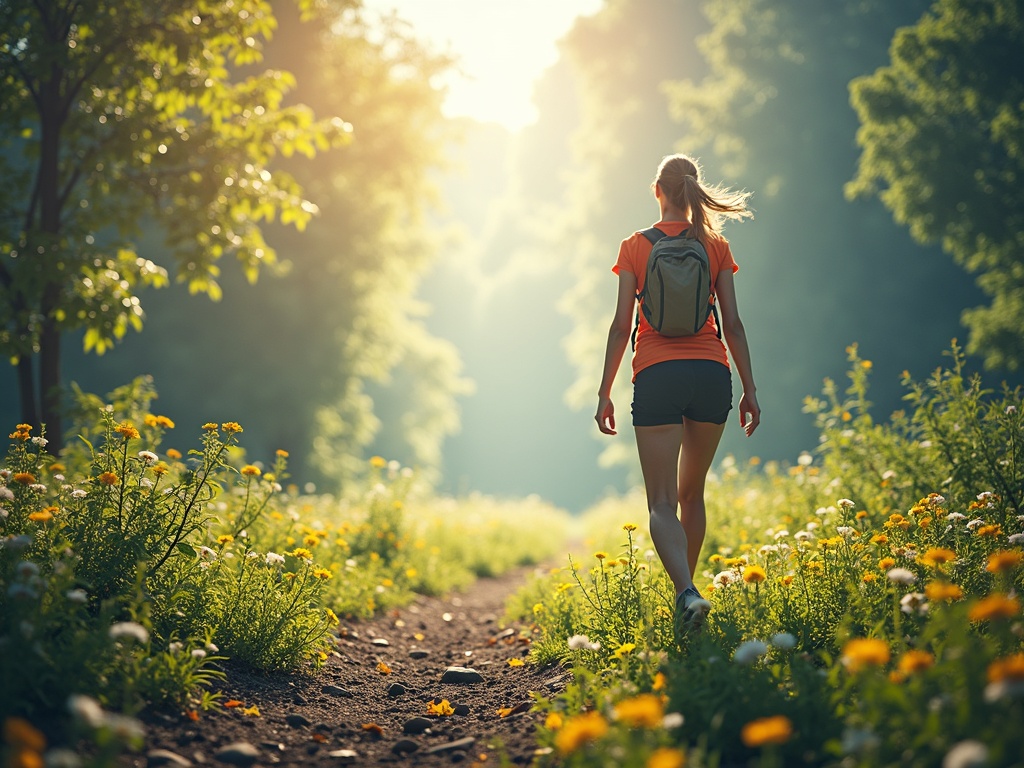Unleash Your Senses: Transformative Sensory Awareness Exercises Outdoors
Imagine this: You’re standing in a forest, but instead of just seeing trees, you’re *feelingthe subtle shift in temperature as a breeze whispers through the leaves. You’re *hearingthe distinct calls of individual birds, each a tiny melody in the grand symphony of the woods. You’re *smellingthe damp earth, a rich aroma that grounds you to the present moment. This is the power of sensory awareness exercises outdoors – a path to heightened perception, profound connection with nature, and a revitalized sense of self.
Why Take Your Senses Outside? The Profound Benefits
In our modern, screen-filled world, our senses are often dulled. We’re bombarded with artificial stimuli, numbing us to the subtle nuances of the natural world. Engaging in sensory awareness exercises outdoors acts as a reset button, a way to reawaken our innate ability to perceive and appreciate the world around us. But the benefits extend far beyond mere appreciation:
- Stress Reduction: Nature is a natural stress reliever. When you actively engage your senses in an outdoor environment, you tap into this calming effect, lowering cortisol levels and promoting relaxation.
- Improved Focus & Concentration: By training your senses to focus on specific stimuli, you improve your overall ability to concentrate, a skill that translates to all areas of your life.
- Enhanced Creativity: Exposure to novel sensory experiences sparks creativity. The ever-changing sights, sounds, smells, and textures of nature can unlock new ideas and perspectives.
- Deeper Connection with Nature: Sensory awareness fosters a sense of belonging and connection to the natural world, leading to a greater appreciation for its beauty and a stronger desire to protect it.
- Mindfulness & Presence: These exercises encourage you to be fully present in the moment, letting go of worries about the future or regrets about the past.
Getting Started: Preparing for Your Sensory Journey
Before diving into specific exercises, it’s essential to prepare your mind and body for the experience.
Location, Location, Location: Choose a natural environment that appeals to you, whether it’s a park, forest, beach, or even your own backyard. The key is to select a place where you feel comfortable and safe. It’s useful to consider accessibility if mobility is a factor.
Dress for Success (and Comfort): Wear comfortable clothing and shoes that allow you to move freely and explore different textures. Consider the weather conditions and dress accordingly.
Leave Technology Behind (Mostly): While you might want to bring a camera to capture your experience, resist the urge to constantly check your phone or other devices. The goal is to disconnect from the digital world and reconnect with your senses. If you want to listen to music, consider gentle calming ambient nature sounds.
Set an Intention: Before you begin, take a few moments to set an intention for your sensory exploration. What do you hope to gain from the experience? Are you seeking relaxation, inspiration, or a deeper connection with nature?
Sensory Awareness Exercises: A Practical Guide
Now, let’s explore some specific exercises you can try outdoors to heighten your sensory awareness:
Sight: The Art of Seeing Anew
Many of us look, but how often do we truly *see*? These exercises will help you sharpen your visual perception:
The 5-4-3-2-1 Exercise: Find 5 things you can see, 4 things you can touch, 3 things you can hear, 2 things you can smell, and 1 thing you can taste. Move slowly and focus on each item individually.
Color Scavenger Hunt: Choose a color and try to find as many shades of that color as possible in your surroundings. Notice the subtle variations and textures.
Cloud Gazing: Lie on your back and watch the clouds drift by. Observe their shapes, patterns, and movements. Let your imagination run wild.
Peripheral Vision Exercise: Focus on a single point in front of you, and then become aware of everything in your peripheral vision without moving your eyes.
Sound: Listening to Nature’s Symphony
The natural world is filled with a rich tapestry of sounds, from the rustling of leaves to the chirping of birds. These exercises will help you tune in:
Sound Mapping: Close your eyes and listen to all the sounds around you. Try to identify each sound and determine its location. Create a mental map of the soundscape.
Nature’s Orchestra: Find a spot where you can hear a variety of sounds. Listen to the different instruments in nature’s orchestra – the wind, the water, the birds, the insects – and notice how they interact with each other.
Silent Walk: Walk silently through a natural environment, paying attention to the sounds of your own footsteps and the subtle sounds of your surroundings.
Touch: Exploring Texture and Temperature
Our skin is our largest sensory organ, yet we often overlook the rich information it provides. These exercises will help you connect with the world through touch:
Tree Hugging (with Awareness): Find a tree and run your hands over its bark. Notice the texture, the temperature, and any patterns or imperfections. Feel the energy of the tree.
Barefoot Walk: Take off your shoes and walk barefoot on different surfaces – grass, sand, dirt, rocks. Notice how each surface feels different on your feet.
Sensory Exploration Bag: Collect a variety of natural objects – leaves, stones, twigs, flowers – and place them in a bag. Reach into the bag and try to identify each object by touch alone.
Smell: The Power of Aromas
Smell is often our most evocative sense, capable of triggering powerful memories and emotions. These exercises will help you awaken your sense of smell:
Scent Scavenger Hunt: Try to identify as many different smells as possible in your surroundings. Notice the subtle nuances and complexities of each aroma.
Flower Power: Find a flower and gently inhale its scent. Notice the different notes and how they affect your mood.
Earth Appreciation: Kneel down and smell the earth. Notice the rich, earthy aroma and how it connects you to the ground.
Taste: Savoring Nature’s Flavors (Safely)
While it’s important to be cautious about what you put in your mouth, there are still ways to explore taste in a natural environment:
Wild Edibles (with Caution): If you are knowledgeable about edible plants, carefully sample a small amount of a safe and identified plant. It’s vital to have expert guidance to avoid poisonous plants, or simply skip this activity.
Mindful Eating Outdoors: Pack a simple snack, such as a piece of fruit or a handful of nuts, and eat it mindfully in a natural setting. Savor each bite and pay attention to the flavors and textures. Consider a glass of water and note how the temperature enhances the taste.
Herbal Tea Ritual: Brew a cup of herbal tea (using safe, commercially available herbs) and enjoy it outdoors. Inhale the aroma of the tea and savor the flavors as you sip it slowly.
Adaptations and Considerations
Sensory awareness exercises are generally safe and accessible for most individuals, but there are a few adaptations and considerations to keep in mind:
Accessibility: Choose locations that are accessible for people with mobility limitations. Consider using assistive devices if needed.
Sensory Sensitivities: If you have sensory sensitivities, start slowly and gradually increase your exposure to different stimuli. Choose environments that are less stimulating and avoid overwhelming yourself.
Safety: Be aware of your surroundings and take precautions to avoid hazards, such as poisonous plants, insects, and uneven terrain.
Weather: Dress appropriately for the weather conditions and be prepared for changes in temperature or precipitation.
Respect for Nature: Leave no trace behind. Pack out everything you pack in and avoid disturbing the natural environment.
Making Sensory Awareness a Habit
The benefits of sensory awareness exercises are cumulative, so it’s important to make them a regular part of your routine. Here are a few tips:
Start Small: Even a few minutes of sensory awareness each day can make a difference.
Be Consistent: Schedule regular sensory awareness sessions into your calendar.
Find a Buddy: Practice with a friend or family member to stay motivated.
Be Patient: It takes time to develop your sensory awareness skills. Don’t get discouraged if you don’t notice results immediately.
Enjoy the Process: Sensory awareness should be a pleasurable experience. Relax, have fun, and let yourself be amazed by the wonders of the natural world.
By incorporating sensory awareness exercises into your outdoor experiences, you can unlock a deeper level of connection with nature, enhance your well-being, and transform your perspective on the world around you. So, step outside, awaken your senses, and embark on a journey of discovery.

